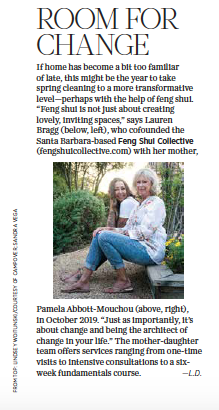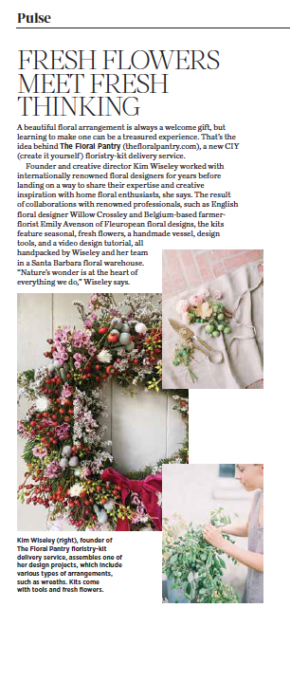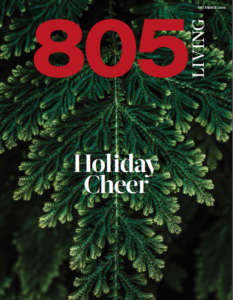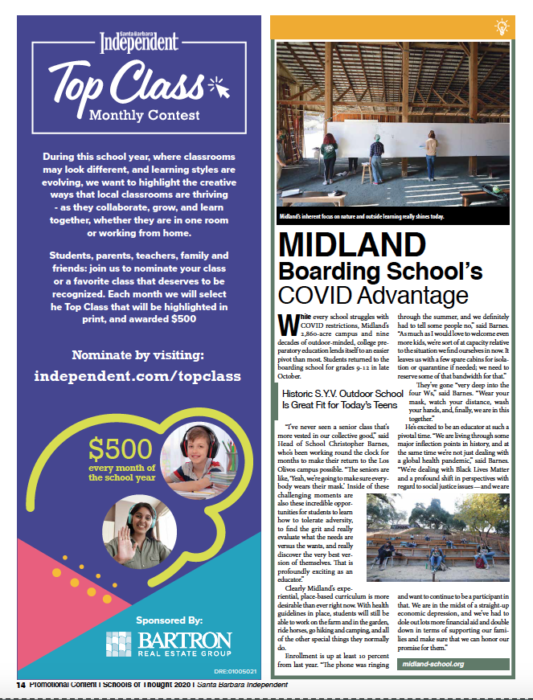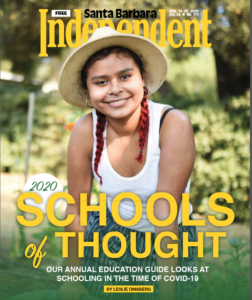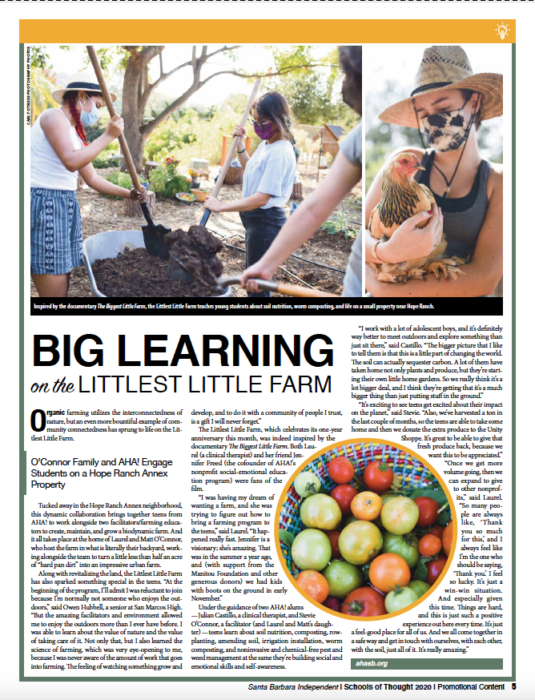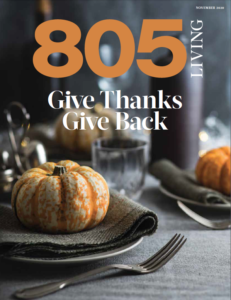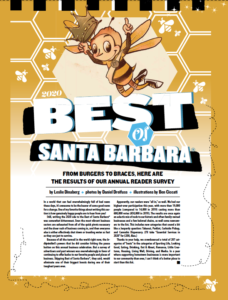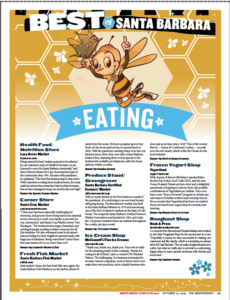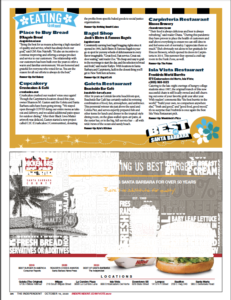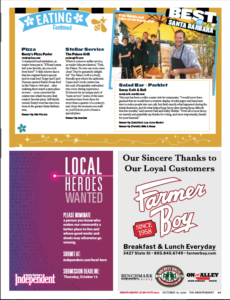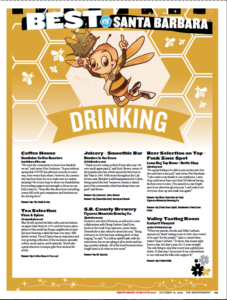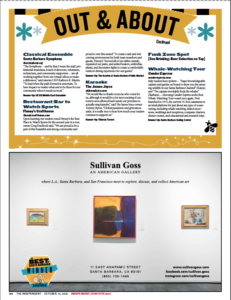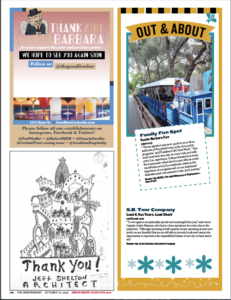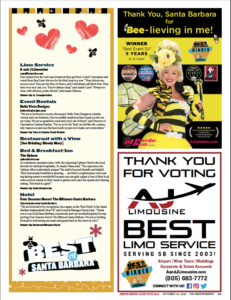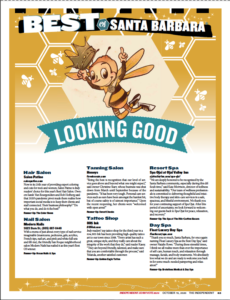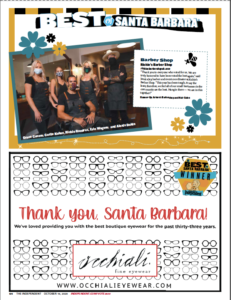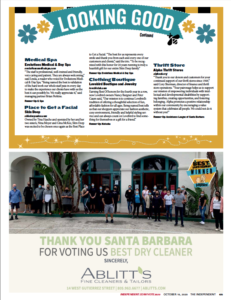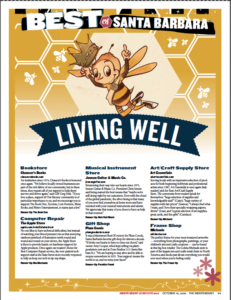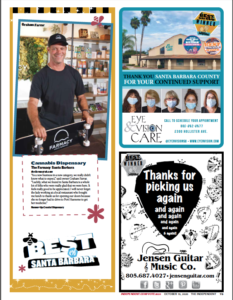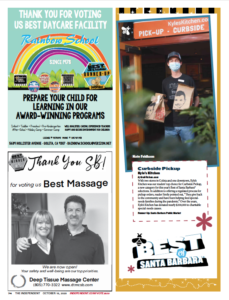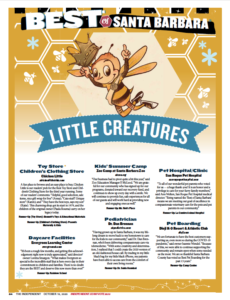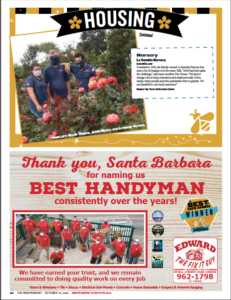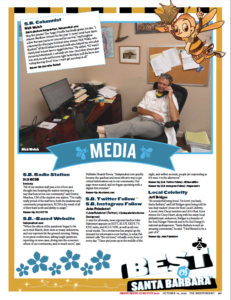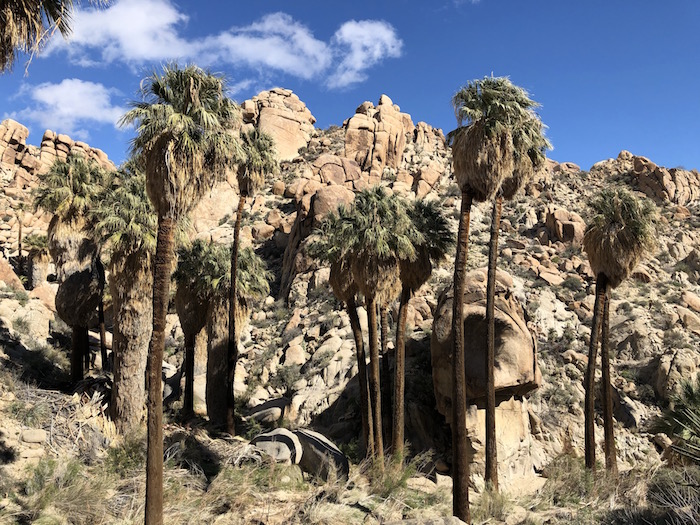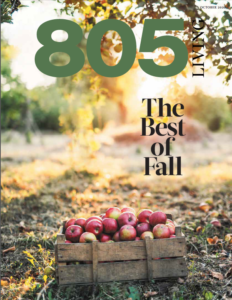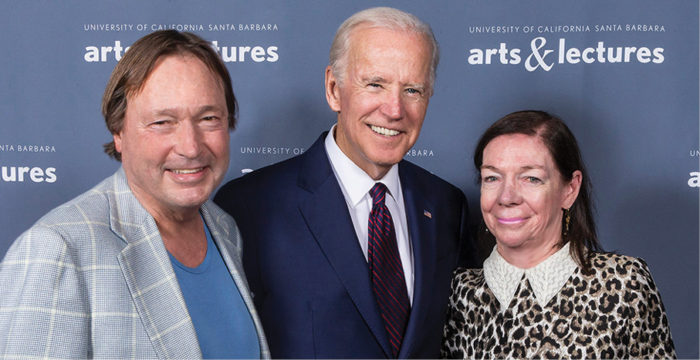
Event sponsors and A&L Council member Tim & Audrey Fisher with Joe Biden. Photo: UCSB Arts & Lectures.
For a town of its size, the cultural life of Santa Barbara is impressively full, say patrons Tim and Audrey Fisher. The couple have been involved with UCSB Arts & Lectures (A&L) since they bought a home in Montecito in 2000, and attended their first performance at Campbell Hall shortly afterward.
Miller McCune Executive Director Celesta Billeci and her team introduced themselves at intermission and the rest, as they say, is history. “We’ve been great friends ever since – we just love them,” says Audrey, a fashion designer and the retired president of a custom couture clothing business.
Tim was part of the creation of the Arts & Lectures Council in 2013. “We raised 25 million over three years and that really financially created a much better environment for A&L,” said the longtime businessman and philanthropist, who recently retired after more than 45 years of leadership in The Hillman Company. As a Council member, Tim guided the establishment of A&L’s legacy giving program and advocated enthusiastically for planned giving.
Audrey is a big fan of A&L’s expansive dance programs, as well as “the variety and the fact that they bring in just about every student, all ages. I like the educational aspect of it and exposing these kids to absolutely world-renowned performers and having it be a part of their everyday lives. … The cultural life is so enriched here.”
As for Tim’s favorite A&L memories, he says, “There have been so many over the years, but I would say most recently Joe Biden was really outstanding. He was very generous with his time and he did a Q&A and interacted with the students. I think it was really special.”
The Fishers recently made a generous donation to the endowment fund, which is important for arts funding, as Tim explains. “The reason nonprofits are called nonprofits is they don’t make money. What an endowment does is it creates a strong capital base. For instance, during this shutdown period A&L would really be struggling financially without the resources of the endowment. Endowments provide financial stability and they are also important because you don’t want the executive directors of nonprofits spending all their time raising money.”
Adds Audrey, “One reason that my foundation decided to support the endowment is because it’s the least appealing gift option for many contributors. It’s the hardest money to raise because people traditionally want to see what they are paying for. While we enjoy sponsoring performances, which we do every year, I think the endowments are kind of a lonely lost child in the family (laughs) and they really need support. I think when people become educated about their merits they do support endowments because there is a security factor.”
Supporting A&L is a family affair for the Fishers. As chair and a trustee of the Audrey Hillman Fisher Foundation, Audrey has given generously to A&L. Their son Matthew has sponsored musical performances and Tim and Audrey have supported a variety of events over the years, ranging from Joe Biden to the Vienna Philharmonic.
The Fisher family also sponsored the Forces of Nature environmental series in 2019-2020, in memory of their son Brooks, who was very good friends with filmmaker and environmentalist James Balog. “They used to go on these incredible exploits together,” says Audrey. Tim adds, “He was a friend of our son, who was an ardent conservationist. I think that for A&L cleaning up the environment is such a strong theme as it is in this country and globally. It’s a very worthy cause to support.”
The Fishers split their time between Santa Barbara and their hometown of Pittsburgh, and the cultural offerings of A&L make it easier for them to go from a bigger place to a smaller place. “In the early ’70s Jack Heinz created the Pittsburgh Cultural Trust which is a really big arts organization. Their budget is over 50 million and they have five theaters and they own a lot of downtown real estate. It’s a big operation, but I would say that we probably attend more events per year in Santa Barbara,” says Tim. “The cultural life here is every bit as full, in large part thanks to A&L.”
This story was originally published by UCSB Arts & Lectures. To see it as it originally appeared, please click here.

